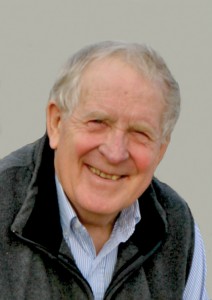by Harold Green
For most of us the term professional evokes images of competence and calmness amongst the chaos of events. For pilots this means maintaining a clear headed analytical approach to every situation encountered. So how can we engender this attitude in our every day flying? The answer probably lies within each of us. However, a little analysis may help develop a professional approach to flying.
First, being a professional pilot does not necessarily mean you fly for pay. It means that when you fly you do so in a professional manner regardless of your ratings. There are many pilots who fly for pay and aren’t professional in their approach, and there are many pilots who fly only for pleasure who are professional. So what does it mean to be professional? There could be many interpretations of professional, but most people would agree that professional embodies at least the following: Knowledge, Competence, Focus, Objectivity and Calmness in the midst of chaos. We will consider each of these in turn.
To be knowledgeable is to be aware of all aspects of flying applicable to our operation. This means a pilot must know all those things required for the knowledge test and more. Further, a lifetime of study is required to extend that knowledge and remain abreast of current technology. That doesn’t mean a grind at the books. It does mean reading aviation publications and reviewing the regulations from time to time. Further, part of our knowledge comes from practicing in the airplane. This includes normal maneuvers, emergency procedures and unusual attitudes. That does not mean that you must practice continually. It does imply that when you fly, you pay attention to details. Have you ever noticed that a true professional holds altitude, heading and remains coordinated at all times? Attention to these attributes while flying produces amazing results over time. An occasional ride with an instructor is also a good idea, particularly in the practice of emergency procedures and in general, to continually extend your piloting capabilities.
Focus means a pilot should clear all matters not flying related from his/her mind. This begins before the preflight and continues until the airplane is safely tied down and passengers are clear of dangerous ramp conditions, such as propellers, jet intakes, etc.
In the event of an emergency, the professional focuses on actions to minimize the effect of the emergency and does so in an objective manner. This focus includes objectively analyzing the situation using the knowledge gained through continued study and applying it properly. Of course this implies a knowledge of the emergency procedures, the use of checklists and an understanding of the options available in the circumstances.
Objectivity is part of being a “pro” because all flight decisions must be made without regard to personal or extraneous considerations. Objectivity also requires the pilot to be aware of her/his personal limitations as a pilot. It is necessary to make flight decisions without regard to what passengers, onlookers or others may think of your decision. That does not mean that proper advice should be ignored. It does mean that the pilot should consider all appropriate advice and make all decisions based on the safety of the flight. The professional knows when to hold ’em and when to fold ’em and acts accordingly.
Competence is defined herein as the ability to judge the situation in view of the capabilities of both airplane and pilot in a realistic and objective manner. Capabilities of the pilot are related to such things as instrument capable, qualified to fly the airplane, ability to work in the airspace involved, currency, etc. The capabilities of the airplane include range, payload, take off/landing performance relative to the airport to be used, etc. As an example, the competent pilot will be able to analyze the situation and make go/no-go decisions based on objective evaluation of the capabilities of the airplane and pilot on that day and in those circumstances. Note that pilot capabilities can be increased by training, experience, etc. Whereas competence refers to the use of the capabilities, objectivity enters here as well.
Calmness is one of the cardinal attributes of the professional. Perhaps the touchstone expression delivered with no evidence of emotion is “Center, we’ve just lost a wing. Requesting a lower altitude please.” There is more than just image involved here. In an emergency, maintaining a calm voice makes it easier for the pilot to remain calm and thoughtfully analytic throughout the emergency. The best way to do this is to maintain that calm voice and demeanor whenever flying. Soon it becomes habit. Practice this whenever you fly, particularly when dealing with controllers. Along with the calmness, practice brevity in your radio communications because this engenders calmness. All communications should be direct, to the point and without emotion. This will also endear you to the controllers.
In summary, professionalism is the result of knowledge, competence, objectivity and calmness, all of which you can develop as you fly. The true professional is one who observes professional practices while flying within their capabilities, regardless of one’s flight time or ratings.
EDITOR’S NOTE: Harold Green is a CFII at Morey Airplane Company, Middleton, Wis.
